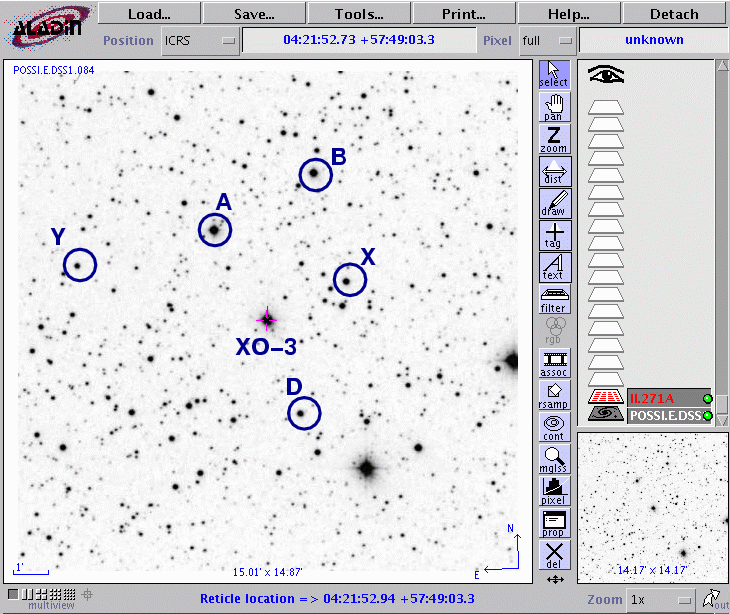
On the night of UT Feb 01, 2008, the SDSS Photometric Telescope ("PT" for short) took a series of exposures of XO-3. We did see a transit at the predicted time, marking our first success on this target. The magnitude of the transit was only about 0.007 mag, making it the smallest one we've measured so far.
Notes from the night
This is a chart of the field. XO-3 is the bright star indicated by the crosshairs. The labelled stars will appear in later analysis.

The host star of XO-3 has a magnitude V=9.80 according to XO-3b: A Massive Planet in an Eccentric Orbit Transiting an F5V Star.
Following the procedures outlined by Kent Honeycutt's article on inhomogeneous ensemble photometry, I used all stars available in each image to define a reference frame, and measured each star against this frame. You can find the software package used to do the ensemble photometry online; it's free!
The night was clear at the start of the run, but cloudy at the end. The graph below shows the amount by which instrumental magnitudes from each image needed to be shifted to match the ensemble reference. On a clear night, this graph would show a straight horizontal line.
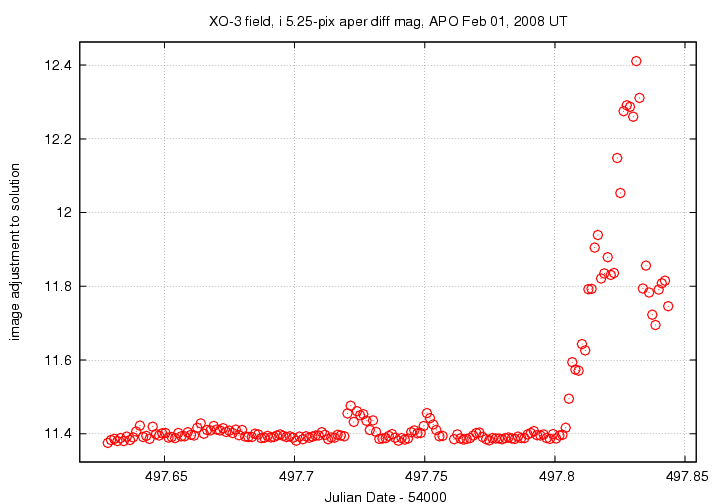
Below is a graph of the scatter in differential magnitude versus magnitude in the ensemble solution.
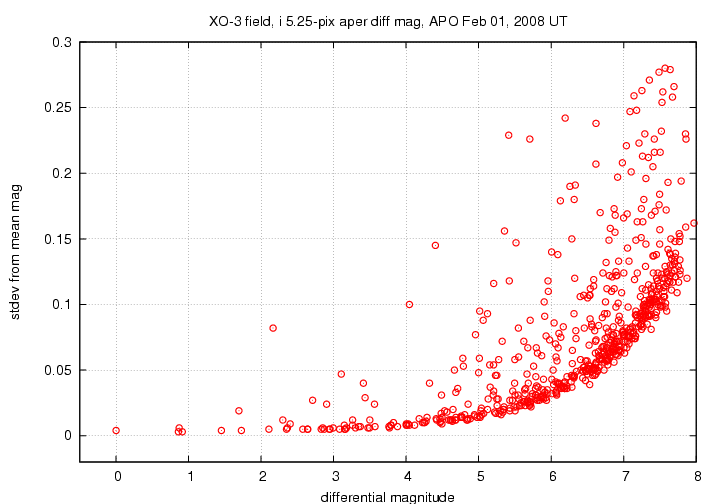
XO-3 is the star at differential mag 0.00; it shows a small excess of scatter over neighboring stars of the same brightness. The "noise floor" in these measurements is about 0.004 mag -- not bad, but not the best for the PT. The outlier at about differential mag 2.1 is the star labelled "X" in the chart above. Its light curve shows a brief dip of depth 0.5 mag and duration 0.015 days = 22 minutes, just as it did in our observations on MJD 54481, indicating that it is an eclipsing binary. A number of the other stars with higher than the usual scatter in this diagram are also eclipsing binaries. The one marked "Y" in the chart above evidently has an eccentric orbit, as the light curve below shows.
Below are the light curves for the target (green symbols) and some comparison stars in the field. The red points near the bottom show the light curve of star "Y", one of several eclipsing binaries which are visible in the field.
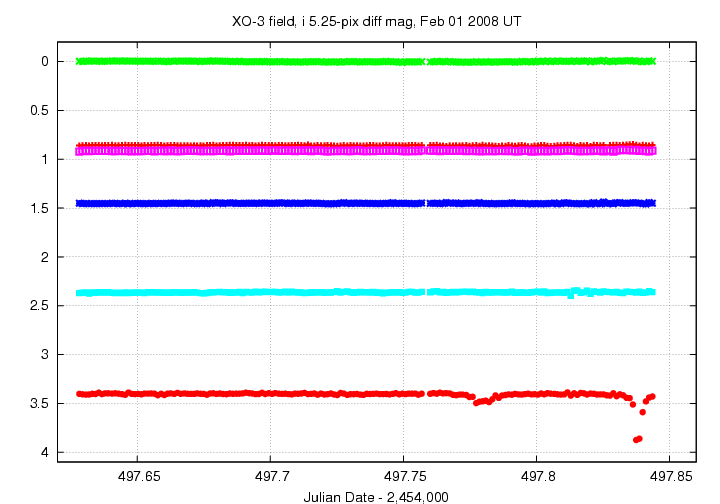
In this closeup, I have shifted the data for three comparison stars to move them closer in magnitude to the target.
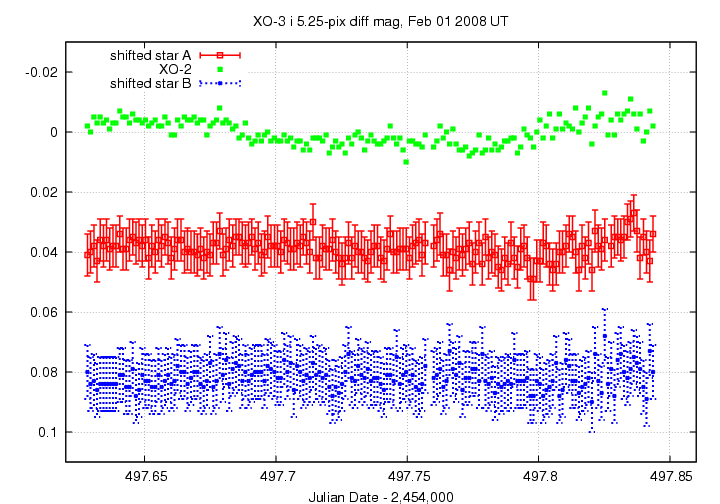
I can make out the ingress at about 497.685, and the egress (less well, due to clouds) at about 497.805.
An ephemeris grabbed from transitsearch.org predicts for this night
----------------------------------------------------------------------------------------
Begin Transit Window PREDICTED CENTRAL TRANSIT End Transit Window
All Times UT
HJD Year M D H M
2454497.69 2008 2 1 4 29 2454497.79 2008 2 1 6 54 2454497.89 2008 2 1 9 19
----------------------------------------------------------------------------------------
The ephemeris ingress of UT 2008 Feb 01 04:29:00 corresponds to JD 2,454,497.687, which agrees very well with my estimate from the data. On the other hand, the ephemeris egress of UT 2008 Feb 01 09:19:00 corresponds to JD 2,454,497.888, which is long after the egress visible in the data. I checked the discovery paper and found that the authors measure a transit length of about 0.12 days. That agrees with our observations, and indicates that the transitsearch.org ephemeris has an incorrect duration.
You can grab the measurements for your own analysis. Below is a table with three flavors of time, plus the differential magnitude of the target and an estimate of the uncertainty in each measurement. I show the first few lines of the file to give you an idea of its format.
# Measurements of XO-3 made with APO PT, Feb 1, 2008 UT. # Each exposure 20 seconds long in SDSS i-band; # Tabulated times are midexposure (FITS header time - half exposure length) # and accurate only to +/- 1 second (??). # 'mag' is a differential magnitude based on ensemble photometry # using a circular aperture of radius 5.25 arcseconds. # # UT day JD-2,450,000 HJD-2,450,000 mag uncert Feb01.62821 4497.62821 4497.63071 -0.002 99.000 Feb01.62942 4497.62942 4497.63192 0.000 99.000 Feb01.63069 4497.63069 4497.63319 -0.005 99.000
Last modified 02/24/2008 by MWR.